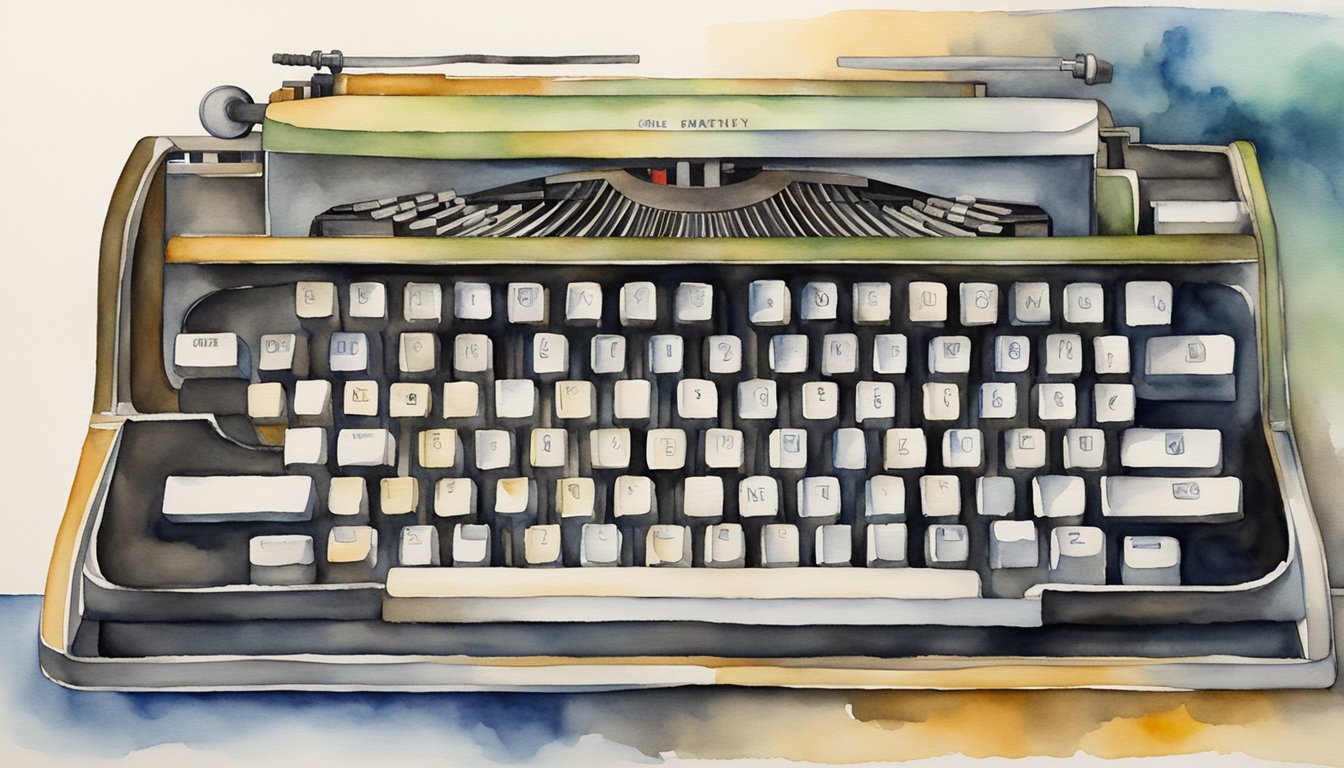Qwerty Keyboard Origins
Unveiling the history of the QWERTY keyboard is like journeying back to the roots of modern typing. At the core of its creation was the quest to prevent jamming on mechanical devices and to aid telegraph operators.
From Typewriter to Standard
The initial layout of the QWERTY keyboard traces back to the invention of the typewriter. It was a response to the mechanical constraints of early typewriters where fast typing caused the keys to jam. To solve this, the letters were arranged in a way that would minimize the clashes between the typebars. The QWERTY design spread quickly as typists and telegraph operators found the arrangement efficient, making it the de facto layout across the United States. The legacy of the QWERTY design has carried on beyond the mechanical age into the digital era, as it remains the standard for most keyboards today.
Notable Inventors and Contributions
Christopher Latham Sholes, often credited as the father of the QWERTY layout, held the patent for one of the first successful typewriters. With the assistance of his colleagues, James Densmore and Carlos Glidden, Sholes refined the typewriter design. Their collective effort culminated in the Sholes and Glidden typewriter, commonly referred to as the Remington No. 1. This device, manufactured by E. Remington and Sons, would go on to popularize the QWERTY layout. From the humble beginnings in Wisconsin to the palpable keys we tap today, the QWERTY keyboard, much like its inventors, carved a niche in the annals of technology.
Technological Evolution

The QWERTY keyboard layout, a design born in the age of mechanical typewriters, has been remarkably resilient, but it has also faced challenges and spurred innovation in keyboard design.
Adaptation and Alternatives
The traditional QWERTY layout, while ubiquitous, is not without its critics. Alternatives like the Dvorak Simplified Keyboard and others arose out of a desire to increase typing speed and reduce finger travel. Dr. August Dvorak specifically designed his layout to address issues of speed and fatigue. Ergonomic concerns, such as reducing repetitive strain injury, have also influenced the development of new layouts. While alternative layouts like AZERTY and QWERTZ cater to language-specific preferences, they haven’t displaced QWERTY’s dominance.
Global Variations
QWERTY’s proliferation around the world isn’t uniform — variations like AZERTY and QWERTZ reflect different language needs. AZERTY is predominantly used in French-speaking countries, while QWERTZ is tailored for Central European languages that require specific diacritical marks. These layouts illustrate the keyboard’s adaptability to diverse linguistic requirements, which is vital as computers reach a broader global audience.
Digital Age Adaptations
In a digital era marked by touchscreens and smartphones, the QWERTY layout has evolved again. Virtual keyboards often feature QWERTY, reflecting its familiarity to users, but innovative designs like KALQ aim to optimize thumb-typing on touch devices. Software keyboards can also easily switch between layouts, accommodating a range of typing preferences and ergonomic considerations. The influence of QWERTY continues in products from companies like Apple, which has its own adaptation of the ISO 9995 standard in its software keyboard for personal computers and mobile devices.
Influence and Integration

The QWERTY layout, designed in the 19th century by Christopher Latham Sholes, Samuel W. Soule, and Carlos Glidden, notably impacted typing. Initially created for typewriters to prevent jamming, this configuration has transcended its original purpose, influencing typing habits worldwide.
For instance, European languages like French and German adapted QWERTY by incorporating accents and specific characters, demonstrating the layout’s flexibility. The German keyboard accommodates umlauts and the ‘ß’ character, while the French version integrates ‘à’ and ‘ç.’ Despite these modifications, the core QWERTY layout remains prevalent.
However, not all adaptations were so seamless. Czech has unique characters and digraphs, which were a challenge to integrate. Samuel Morse’s invention, Morse code, even shares a linkage with QWERTY, where the most frequently used codes are assigned to the easiest-to-reach dots and dashes.
The advent of digital technology saw the QWERTY layout transitioning smoothly to software keyboards on tablets and mobile phones. Ingenious solutions like the Half-QWERTY keyboard permit typing with one hand, demonstrating innovation that maintains the QWERTY’s relevance.
While many English speakers find the QWERTY layout to enhance typing speed, others argue it doesn’t offer the same ergonomic benefits to all. Remarkably, Koichi Yasuoka and Motoko Yasuoka, through their research, suggest the layout reflects the structure of the English language, questioning its efficiency in other languages.
The Union Typewriter Company, which consolidated QWERTY’s dominance, underscores the layout’s staggering market shares. As QWERTY assimilated into varied languages—from Danish and Swedish to Hungarian and Turkish—it created a universal tool that transcended linguistic barriers, cementing its indisputable influence on global communication.

